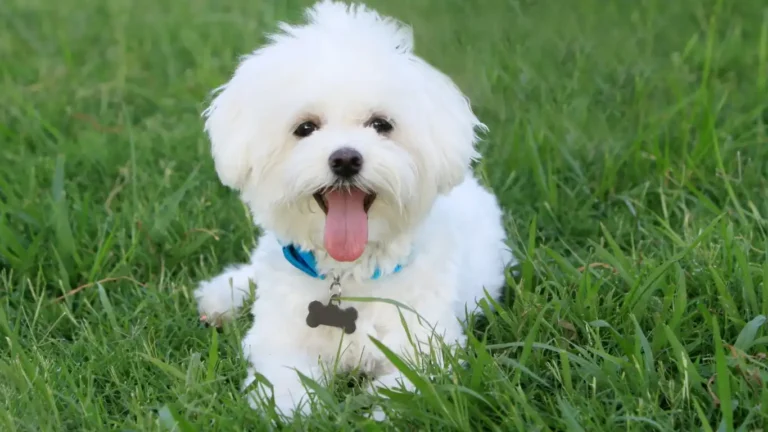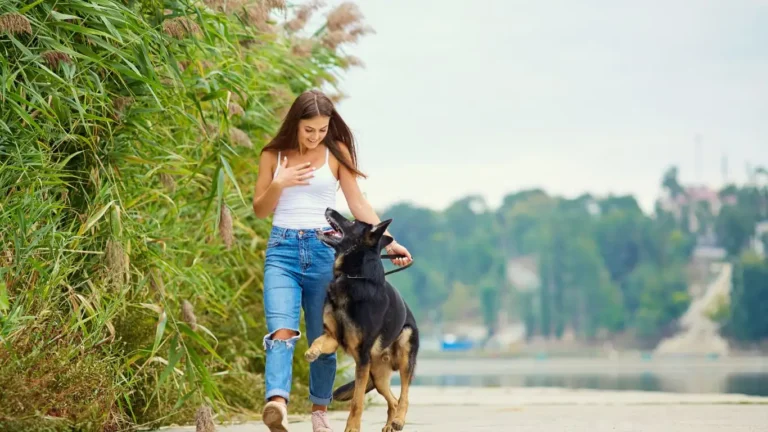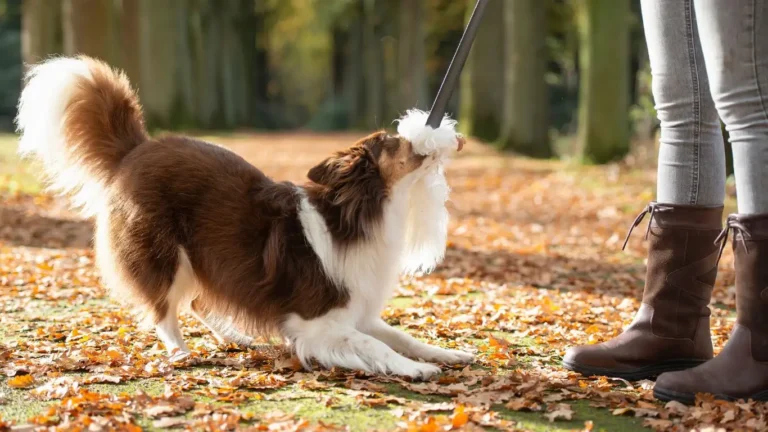How to Tell If Your Dog Is Overstimulated: Key Signs to Watch
If you’ve ever spent time with dogs—whether your own furry friend or those at a clinic—you might have noticed how their behavior can shift suddenly. Sometimes, your happy-go-lucky pooch might become restless, bark excessively, or seem downright overwhelmed. Knowing how to tell if your dog is overstimulated is crucial, especially because it’s not always obvious to the untrained eye. As a Veterinary Technician specializing in nutrition and overall pet care, I’ve seen firsthand how overstimulation can affect a dog’s wellbeing, behavior, and even physical health. The good news? With a little knowledge and keen observation, you can spot the signs early and help your dog find calm again.
What Does Overstimulation Mean for Dogs?
Overstimulation happens when a dog’s senses get overloaded by their environment. Imagine being at a loud concert after a long day—your senses might feel frazzled and your patience thin. Dogs experience this too, but because they can’t tell us how they feel, their behavior gives us clues. This isn’t just about being excited or energetic; overstimulation can lead to anxiety, stress, and even aggression if not managed properly.

In my years working with dogs, I’ve noticed that overstimulation often sneaks up during busy family gatherings, trips to the dog park, or when meeting new dogs or people. It can be subtle at first—like panting or pacing—but quickly escalates if ignored.
Common Signs to Watch For: How to Tell If Your Dog Is Overstimulated
So how do you spot if your dog is pushing their limits? Here are some telltale signs that I’ve learned to recognize over countless shifts at the clinic and during home visits:
1. Excessive Panting and Drooling
Sure, dogs pant to cool down, but when you notice heavy panting out of context—like inside on a cool day or right after a calm activity—it’s a red flag. Drooling can also increase as their body reacts to stress.
2. Restlessness and Pacing
If your dog can’t seem to settle, is pacing around the room, or constantly shifting positions, they might be overwhelmed. It’s like when you just can’t sit still because your brain is racing.
3. Vocal Changes: Barking, Whining, or Growling
Sudden vocalization changes are classic signs. Your usually quiet dog might start barking or whining excessively. Sometimes, growling pops up as a warning—especially if they feel cornered or frustrated.
4. Avoidance or Hiding
Dogs can’t just walk away from the noise or crowd like we can, so some try to hide or avoid interaction altogether. If your dog suddenly seeks a quiet corner or under furniture, pay attention.
5. Hyperactive or Over-Excited Behavior
Sometimes overstimulation looks like the opposite of calming down—your dog might jump, nip, or exhibit frantic behaviors. It’s a way to release built-up energy, but it often signals they’re overwhelmed.
Why Recognizing Overstimulation Matters for Your Dog’s Health
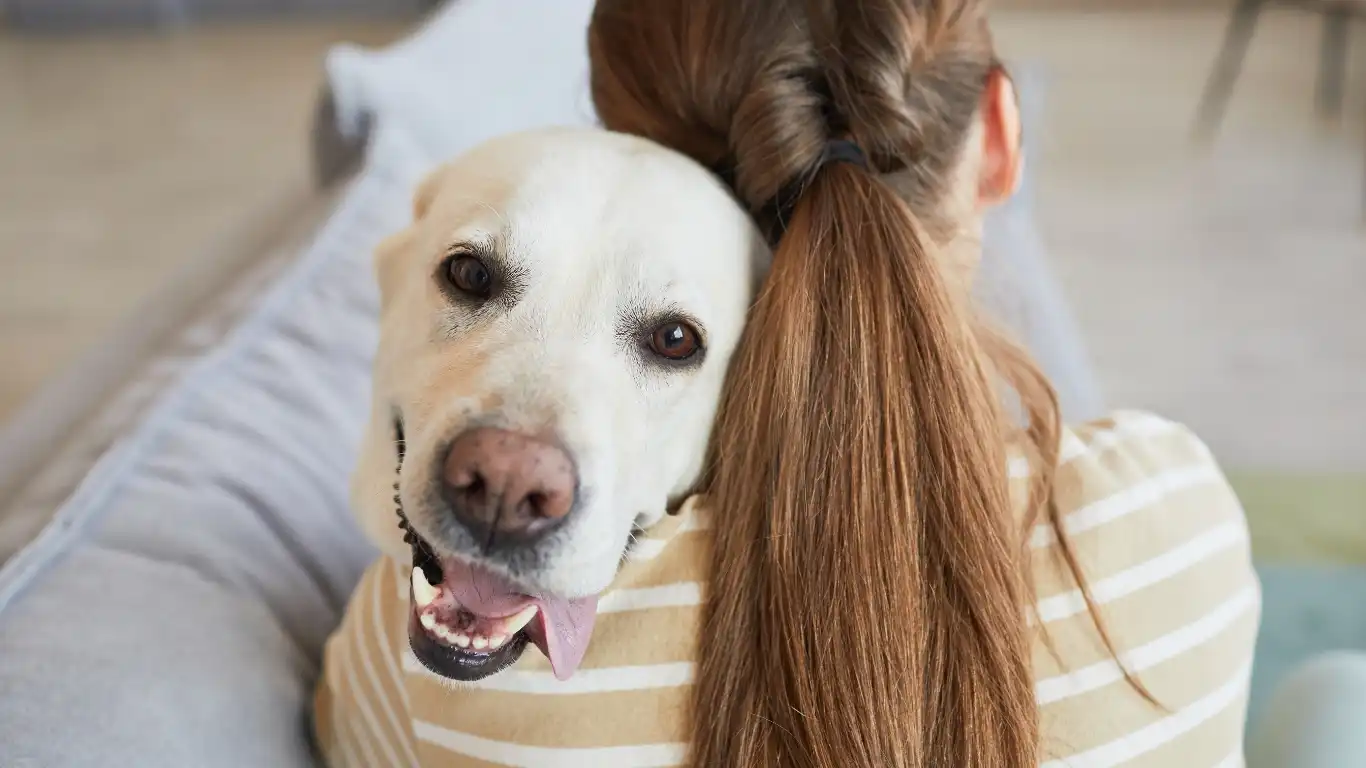
From a veterinary perspective, overstimulation is more than just “bad behavior.” It’s a stress response that, if frequent or intense, can affect your dog’s immune system, digestion, and even nutritional needs. I often advise dog owners that managing stress is just as important as feeding a balanced diet or keeping up with vaccines. Chronic stress can lead to health issues, so catching overstimulation early is key to long-term wellbeing.
Understanding the Link Between Nutrition and Stress
As a nutrition-focused vet tech, I’ve observed how diet can influence a dog’s ability to handle stress. Nutrients like omega-3 fatty acids, antioxidants, and certain vitamins can support brain health and reduce anxiety symptoms. While nutrition alone won’t fix overstimulation, it’s part of a holistic approach that includes recognizing behavioral signs and adjusting your dog’s environment.
Practical Steps to Prevent Overstimulation
Prevention starts with understanding your dog’s limits. Some dogs are naturally more sensitive, while others tolerate chaos better. Based on my experience, here are a few tips that help:
- Create quiet spaces: Have a calm, cozy spot your dog can retreat to when things get too loud or busy.
- Watch the crowd: During family events or outings, limit the number of people or dogs your pet interacts with at once.
- Monitor playtime: Intense play is fun but keep sessions short and observe your dog’s reactions carefully.
- Use calming aids: Sometimes simple tools like pheromone diffusers or calming treats can support your dog’s relaxation.
How to Calm an Overstimulated Dog

Once you’ve recognized that your dog is overstimulated, the next step is knowing how to help them chill out. From my time working alongside vets and pet owners, I’ve learned that every dog reacts differently, so it’s about reading their unique signals and adjusting accordingly. Here are some tried-and-true strategies to bring your furry friend back to a peaceful state:
Create a Safe and Quiet Environment
One of the simplest yet most effective ways to help your dog decompress is to provide a safe haven. This could be a cozy crate, a quiet room, or a corner with their favorite blanket and toys. The idea is to reduce sensory input as much as possible—turn off loud music, dim the lights, and minimize foot traffic.
Personally, I always recommend teaching dogs early on that their crate or designated spot is a positive space, not a punishment. When they voluntarily go there, it’s easier for them to retreat during overwhelming moments.
Use Gentle Touch and Soothing Voices
Dogs pick up on our energy big time. When I’m helping a stressed dog, I lower my voice and use slow, calm movements. Rushing in or loud commands can spike their anxiety further. Instead, gentle petting—especially around the shoulders or chest—can signal reassurance. Just be mindful some dogs might prefer space, so observe how your dog responds.
Practice Controlled Breathing and Relaxation Exercises
This might sound a bit human-centric, but teaching your dog relaxation exercises works wonders. For example, deep belly breathing can sometimes be encouraged by calmly stroking your dog’s rib cage and rewarding calm behavior with treats. I’ve coached owners on simple “settle” commands paired with soft praise, helping dogs associate calmness with positive outcomes.
When Overstimulation Leads to Aggression or Fear

It’s important to understand that overstimulation doesn’t always just cause hyperactivity or restlessness. In some cases, it can escalate to fear-based or defensive aggression. This is when knowing how to tell if your dog is overstimulated becomes even more critical.
Recognizing Early Warning Signs of Aggression
From my experience working in veterinary clinics, dogs that reach their threshold may:
- Growl or snarl unexpectedly
- Show teeth or snap when approached
- Flatten their ears or tuck their tail tightly
- Avoid eye contact or suddenly stare intensely
These signs are your dog’s way of saying, “I need space!” Ignoring them can lead to bites or increased anxiety, so stepping back and giving your dog room is vital.
Handling Aggression with Care
If your dog shows aggression when overstimulated, avoid punishment or forceful corrections—these often make things worse. Instead, focus on prevention: limit stressful triggers, practice gradual socialization, and consider consulting a professional behaviorist if aggression is frequent or severe. I’ve seen amazing progress in dogs when owners take a patient, informed approach rather than quick fixes.
How Environment and Routine Affect Overstimulation
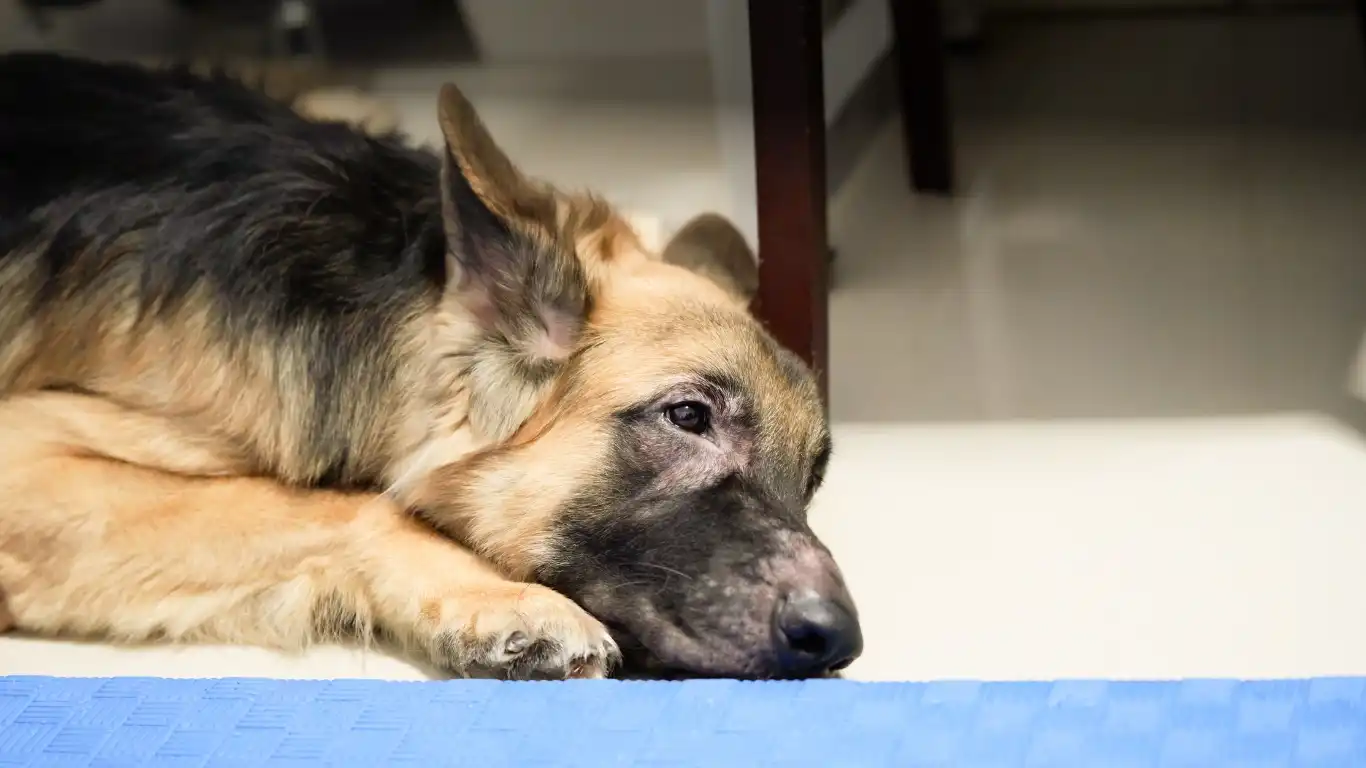
One big lesson from my vet tech days is that your dog’s environment and daily routine play massive roles in how often and how intensely they get overstimulated. Dogs thrive on consistency and predictability, so sudden changes or chaotic surroundings can push them over the edge faster.
Importance of Consistent Exercise and Mental Stimulation
Dogs need a healthy balance of physical activity and mental challenges to stay calm and happy. I always recommend regular walks, play sessions, and puzzle toys to keep their minds busy. Without this balance, energy builds up and makes overstimulation more likely when something exciting or stressful happens.
Setting Boundaries and Managing Social Interactions
Some dogs love socializing; others find it overwhelming. Knowing your dog’s social limits helps prevent overstimulation. For example, if your dog gets anxious around large groups or other dogs, shorter, controlled meetings work better than long, chaotic playdates. During my shifts, I often guide owners on reading their dog’s body language to stop interactions before things escalate.
The Role of Owner’s Emotional State
Here’s a pro tip from years of hands-on experience: dogs are masters at mirroring our emotions. If you’re stressed or anxious, your dog can pick up on that and become overstimulated more easily. Taking a moment to breathe deeply and stay calm during stressful times can actually help your dog stay grounded, too.
Training Tips to Help Prevent Overstimulation

Over the years, I’ve learned that prevention is always better than trying to fix overstimulation after it happens. Training your dog with patience and consistency can dramatically reduce episodes of overwhelm. Here’s what I recommend based on my hands-on experience as a Veterinary Technician working closely with dogs and their families:
Teach Clear “Calm” and “Settle” Commands
One of the most powerful tools is training your dog to associate a word or phrase with relaxation. I usually advise starting with simple commands like “calm” or “settle”, paired with gentle petting and treats when your dog is naturally relaxed. Over time, your dog will learn to tune into this cue even when they feel anxious or overstimulated. This has helped many of the dogs I’ve worked with regain control in stressful situations.
Gradual Desensitization to Triggers
Another technique is gradual exposure to whatever tends to overstimulate your dog—whether it’s loud noises, crowds, or other animals. This doesn’t mean throwing your dog into the deep end, but rather slowly increasing their tolerance in a controlled way. For example, if your dog gets overwhelmed by noisy environments, try playing recorded sounds at low volume while rewarding calm behavior, and slowly build up over weeks. This method can build resilience and confidence over time.
Use Positive Reinforcement, Not Punishment
From my perspective, one of the biggest mistakes owners make is reacting harshly when their dog acts out from overstimulation. Yelling, scolding, or using force can damage trust and increase stress. Instead, focus on rewarding good behavior and redirecting your dog gently. The trust you build with positive reinforcement pays off immensely.
When to Seek Professional Help

Sometimes, despite our best efforts, overstimulation can become a chronic issue or trigger severe reactions like aggression or anxiety. In these cases, it’s important to reach out to professionals. I’ve collaborated with veterinary behaviorists and certified dog trainers who specialize in behavior modification, and their expertise can be a game-changer.
Veterinary Behaviorists and Trainers
Veterinary behaviorists are veterinarians with additional training in animal behavior. They can rule out medical causes for your dog’s reactions and create a tailored plan that may include behavior modification, environmental management, and sometimes medication. Certified trainers, on the other hand, focus more on practical training techniques and socialization strategies.
Don’t Wait Until It’s Too Late
From personal experience, early intervention makes a huge difference. If you notice persistent signs of overstimulation or escalating aggression, don’t hesitate to seek advice. The sooner you start, the better the outcomes—for both you and your dog.
Final Thoughts on How to Tell If Your Dog Is Overstimulated
Understanding the signs of overstimulation and knowing how to respond can truly improve your dog’s quality of life. It’s about more than just behavior—it’s about recognizing when your dog’s body and mind need a break, and respecting their limits. Throughout my years in veterinary care, I’ve seen that dogs thrive when their humans are attentive, patient, and compassionate.
Keep in mind that every dog is different. What stresses one dog out might be no big deal for another. That’s why observation and tailoring your approach are so important. With some practice, you’ll become fluent in your dog’s unique language, and together, you’ll navigate the sometimes noisy, busy world with more ease and joy.
References
- American Veterinary Medical Association
- ASPCA
- Association of Professional Dog Trainers
- Centers for Disease Control and Prevention (CDC) – Pet Safety
Disclaimer
This article is for informational purposes only and is not a substitute for professional veterinary advice, diagnosis, or treatment. Always consult your veterinarian or a certified animal behaviorist for concerns about your dog’s health or behavior. Every dog is unique, and individual care plans should be tailored accordingly.
